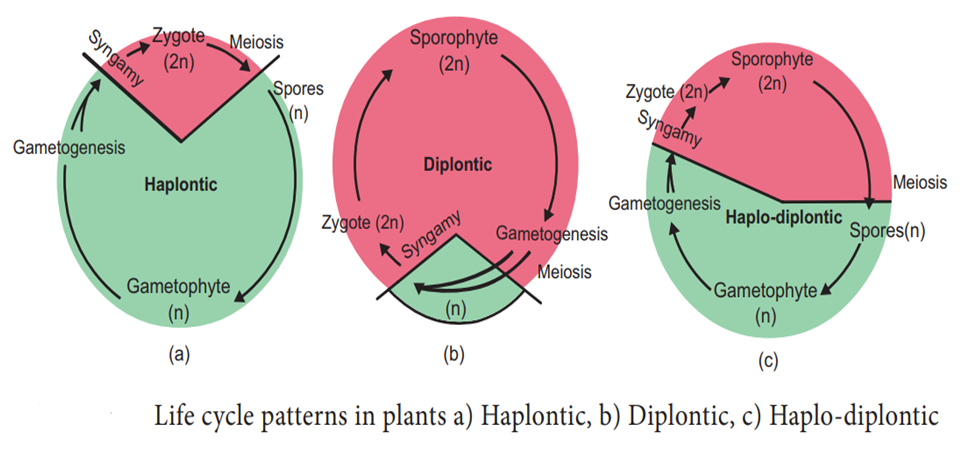Plant Life Cycles and Alternation of generations
The alternation of generations, also known as metagenesis or heterogenesis, is the transition between a sexual and asexual phase in an organism's life cycle. Both physically and chromosomally, the two phases, or generations, are often unique.
Mitosis allows haploid and diploid cells in plants to divide. This ability results in the development of haploid and diploid plant bodies. Mitosis creates gametes in the haploid plant body. A gametophyte is represented by this plant body. The zygote divides by mitosis after fertilization to generate a diploid sporophytic plant body. Meiosis produces haploid spores in this plant body. These, in turn, divide by mitosis to produce a haploid plant body.During the life cycle of any sexually reproducing plant, the gamete-producing haploid gametophyte, and the spore-producing diploid sporophyte alternate generations.
Individuals from diverse plant groups differ in the following patterns:
1. The one-celled zygote is the sole representative of a sporophytic generation. Sporophytes do not exist as free-living organisms. The zygote undergoes meiosis, which leads tothe creation of haploid spores. The gametophyte is formed when haploid spores divide mitotically. The free-living gametophyte is the major photosynthetic phase in such plants. The term "haplontic" refers to this type of life cycle. This pattern is found in many algae, including Volvox, Spirogyra, and some Chlamydomonas species.
2. The kind in which the diploid sporophyte is the dominant, photosynthetic, and independent phase of the plant is the other extreme. The single to few-celled haploid gametophyte represents the gametophytic phase. This type of life cycle is known as diplontic.This pattern is shown by the alga Fucus sp. Furthermore, all seed-bearing plants, such as gymnosperms and angiosperms, follow this pattern with some modifications, with the gametophytic phase ranging from single to multicellular.
3. Bryophytes and pteridophytes, for example, have an intermediate state (Haplo-diplontic), in which both phases are multicellular. Their dominating periods, however, are distinct.
A haploid gametophyte represents a dominant, autonomous, photosynthetic, thalloid, or erect phase that alternates with the short-livedmulticellular sporophyte that is entirely or partially dependent on the gametophyte for anchoring and nourishment. This pattern is found in all bryophytes. A dominant, autonomous, photosynthetic, vascular plant body represents the diploid sporophyte. It alternates with a haploid gametophyte that is multicellular, saprophytic/autotrophic, and independent but short-lived. The haplo-diplontic life cycle is a pattern like this.
All pteridophytes exhibit this pattern. Interestingly, while most algal genera are haplontic, some of them such as Ectocarpus, Polysiphonia, and kelps are haplo-diplontic. Fucus, an alga is diplontic.


 ACME SMART PUBLICATION
ACME SMART PUBLICATION
